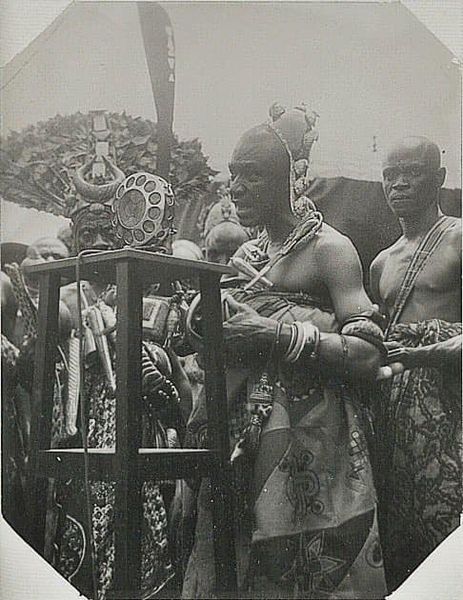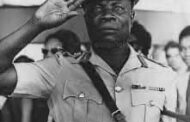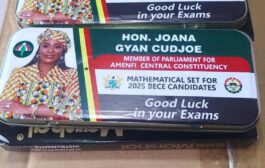On 31st January, 1935 the British Governor Sir Arnold Wienholt Hodson proclaimed the ‘the Restoration of the Ashanti Confederacy’ Otumfuo Sir. Osei Agyemang Prempeh II became the Asantehene.
When the British captured Asantehene Prempeh I in 1896, deported him to Seirra Leone and then Seychelles Island, the Kingdom was broken as per the intent of the British Government in the Gold Coast. The dissolution of the Asante confederacy was also dictated by the fear of Asante power, one whose pros was the confederacy itself.
To replace the Asante power therefore, British officials must destroy the Confederacy. For the same reason, Governor Sir Frederick Mictchell Hodgson tried to unsuccessfully in 1900 to seize the Golden Stool which apart from the Asantehene and council, the prop of Asante unity and power.
After the British declared Asante as a Crown Colony after the Yaa Asantewaa War in 1901, the British Chief Commissioner of Asante came to assume many of the functions of the Asantehene but during the early part of the British administration in Asante was met by reactions by the interference of British rule on Asante native institutions and these reactions constituted serious administrative difficulties for the British.
The increasing hostility of the young against the old emphasized the breakdown in the political and social structure of Asante society. This involved the British frequent changes of administrative measures. For instance, in 1927, due to the general unrest in Asante, the government had to amend the native jurisdiction ordinance in 1924.
This amendment empowered the chief commissioner of Asante a council for a town, the majority of those inhabitants who did not originally owe allegiance to the chief of the division. For example, in 1929, the stools of Amoaful and Essumegya lost their powers and they were treated as ordinary Odikro instead of Amanhene (Paramount Chiefs) and they should regard the Omanhene of Bekwai as their immediate overload.
But these administrative measures by the British on Asante did not achieve the desired goal, rather they enabled power to slip from the hands of the government. Realizing that the chain of reactions from which the administrative sprang problems with the interference with Asante traditional institutions, the British decided to restore them and, in this way, strengthen their administrative control of Asante.
As administrative problems increased, especially from about 1922, there was a concerted agreement in the suggested solutions of the British officials that the restoration of Asante institutions might save the situation and make the British administrative control easier.
Governor Guggisberg and Mr. Fiddian at the colonial office in particular subscribed to this view. It is also known that Mr. Thomas of the Colonial Office expressed the view that the restoration of the Asante Confederacy by the Gold Coast Government would solve the difficult problem of local government which had been for long in the thorn flesh of the British.
The reason for the restoration of Asante institutions was the fact that the Asante themselves wanted the institutions back and, in this connection, made repeated requests to the government. In 1914,1918 and 1919, the Asante asked that Prempeh I, the former Asantehene be repatriated. In 1924-1925, the Kumasi division also demanded for the restoration of villages formerly belonging to Kumasi chiefs; the people in general repeated their request for the restoration of Prempeh as Kumasihene.
Another incident which argues the attachment of the Asante to their institutions was the widespread indignation in the country over the desecration of the Golden Stool. The Government, in trouble, naturally felt that if it granted the demands of the Asante, it would earn their gratitude and friendship and such cooperation would make administration easier.
These circumstances compelled the Gold Coast Government to repatriate Asantehene Prempeh I in 1924. A couple of years later they went further and restored him as Kumasihene. In 1935 Prempeh II, who had succeeded Prempeh I as Kumasihene in 1931, was declared as Asantehene and the Asante Confederacy was restored. Prempeh II was the first Asantehene to take the title “Otumfuo”. The new Confederacy consisted of Kumasi, Mampong, Juaben, Bekwai, Essumegya, Kokofu, Kumawu, Nsuta, Adanse, Ejisu, Offinso and Agona. The Brong districts of Banda, Wenchi and Mo also joined the Confederacy but their own accord. So, the division reabsorbed the districts of Obogu, Denyase, Bompata, Manso Nkwanta and Ahafo. The ancient loyalties of the Asante divisions now received official recognition.
The restoration of Asante traditional institutions brought stability and contentment. Cases in the provinces were once referred again to Kumasi chiefs, Otumfuo Sir Osei Agyemang Prempeh II himself settled cases in Akrodie, an Ahafo village and in Bekwai.
He also cleared the confusion which had arisen in Asante over Great Oath cases, by asserting his own traditional rights in connection with these cases. Otumfuo Sir. Osei Agyemang Prempeh II was instrumental in restoring peace in Asante. Just within a year of his enstoolment, he settled Agona chieftaincy affairs which the Colonial Government failed to do so.
Through the Asantehene and the Asante Confederacy the British Administration achieved a firm hold over the country. Asante remained, nonetheless, a separate crown colony until it became united as part of the new dominion named Ghana under Ghana Independence Act 1957.
Source:Mybrytfmonline.com/Kingdom of Ashanti




















































